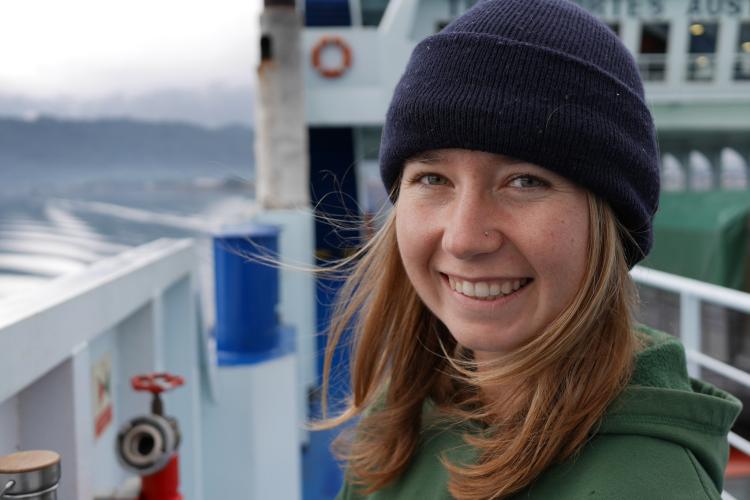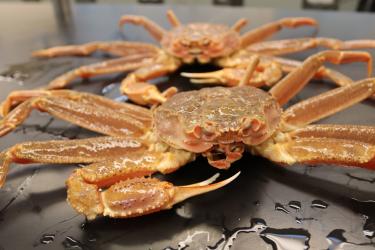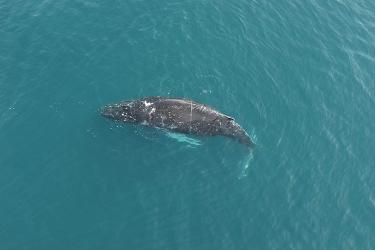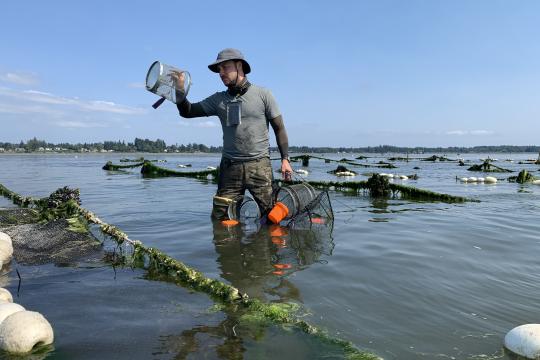Today the Alaska Fisheries Science Center announced that it has hired a new Mariculture Research Lead, Dr. Jordan Hollarsmith, to develop its mariculture research program and represent the Alaska Fisheries Science Center as part of a national aquaculture program in NOAA Fisheries. Hollarsmith will be based in Juneau, Alaska, at the Center’s Ted Stevens Marine Research Institute. Research is needed to aid resource managers in making informed decisions about mariculture development, and support industry via development of new technologies.
Hollarsmith has a diverse background in estuarine hydrological research, ecological studies, kelp and coral reef rehabilitation, and shellfish and kelp aquaculture. In her new position, she will work with Center and NOAA Fisheries Regional Office staff focused on mariculture, University of Alaska scientists, Alaska Sea Grant, the Alaska Fisheries Development Foundation, mariculture industry, and coastal communities engaged in mariculture. She will help to build new partnerships and identify and implement mariculture research priorities in Alaska.
In collaboration with industry, she will support research for pilot projects to explore the commercial viability of mariculture production. She will also conduct field- and laboratory-based research on general macroalgae (seaweed) biology and ecology, and nearshore ecosystem dynamics. With Hollarsmith’s expertise, the Center plans to advance research into a wide spectrum of relevant issues such as how to safely culture shellfish and macroalgae species, species life-cycle analysis, and potential habitat benefits and impacts of mariculture. This will build on culturing research currently conducted at the Center’s Kodiak Laboratory on crab and macroalgae, and at the Center’s Auke Bay Laboratories on bivalve species.
"We're excited for the research community and our industry partners to get to know Jordan. She has many strengths, but one of her hallmarks is the value she places on communication and building relationships. We know we'll create a stronger research program if our stakeholders have a voice in shaping research priorities," said Jeremy Rusin, deputy director, Alaska Fisheries Science Center.
Hollarsmith earned her Ph.D. in 2019 from the University of California-Davis where her work focused on the resilience of marine habitat-forming species to global change. She then spent a year as a Canadian Healthy Oceans postdoctoral fellow at Simon Fraser University in Vancouver, Canada. There she focused on ecosystem management strategies that account for multiple stressors, including synthesizing approaches used in cumulative effects assessments and using expert knowledge to summarize stressors on kelp in the Salish Sea.
Throughout her career, Hollarsmith has focused on advancing partnerships with industry, government agencies, and academic institutions in the United States, Canada, Chile, Mexico, Indonesia, Australia, and the Dominican Republic. She received a B.A. from Columbia University in 2012.
“I’m looking forward to working with scientists at the Center and Alaska community members on research projects that provide a foundation to ensure the economic and ecological sustainability of Alaska's high quality seafood,” said Hollarsmith.
This research will help the Center meet NOAA’s aquaculture mission and respond to the President’s 2020 Executive Order Promoting American Seafood Competitiveness and Economic Growth.
“With this new position, the Alaska Fisheries Science Center is committing to providing science and national representation to support responsible mariculture development in Alaska. Mariculture can benefit Alaska, coastal communities, and regional economies and complement our mission to maintain healthy and productive marine ecosystems, and sustainable commercial, recreational and subsistence fisheries in Alaska,” said Robert Foy, Director, Alaska Fisheries Science Center.
Support for this position comes from NOAA Fisheries Office of Aquaculture.






